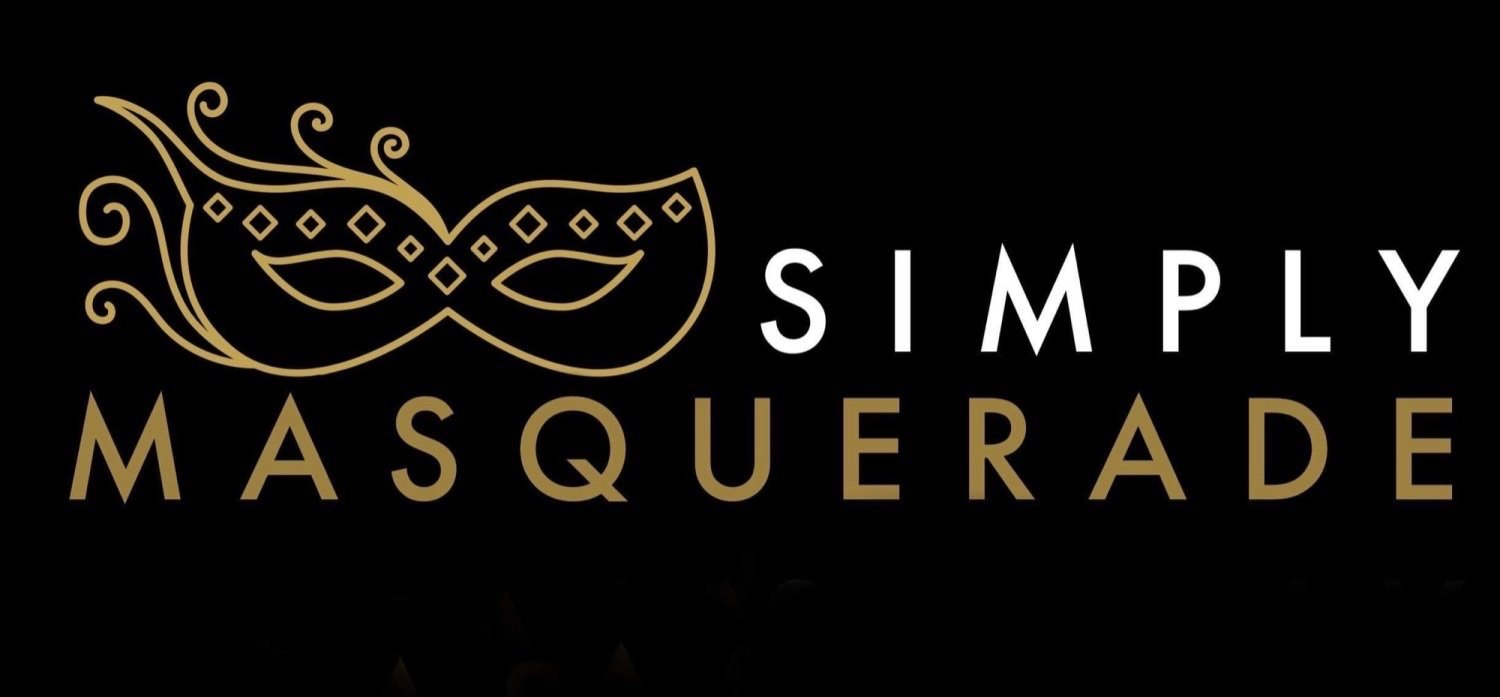What Are The Venetian Masquerade Masks Styles?
We hope you find find this page both helpful and interesting......
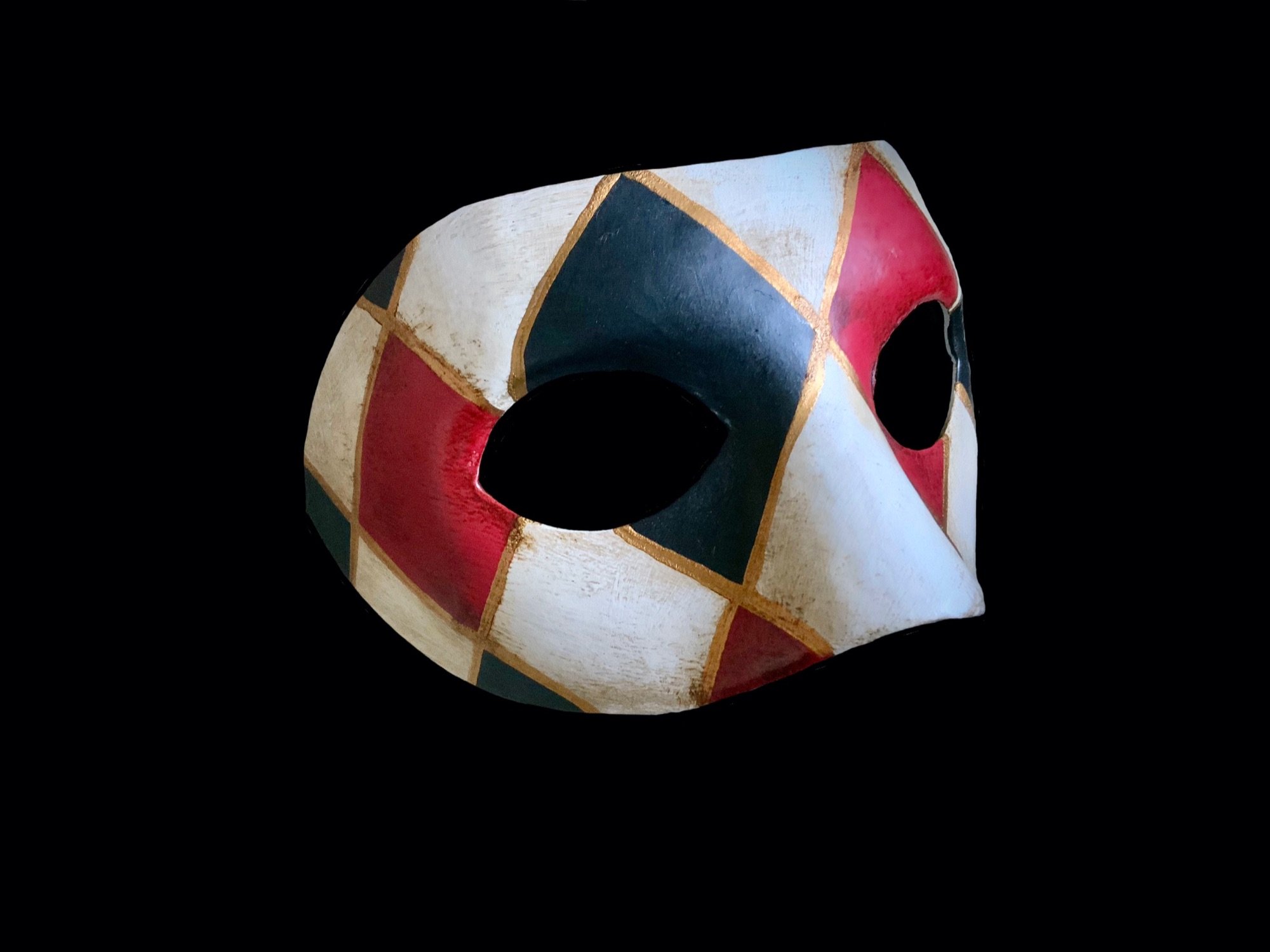
COLUMBINA
Popularised by a recurring character in the commedia dell’arte by the same name (also known as Columbine or Columbina), the Columbina is traditionally a half mask adorned with an ornate variety of Jewels, feathers and fabrics. Often painted in gold or silver, it was held in place by either a ribbon or a stick.
Colombina is a maidservant and the lover of Arlecchino. She dressed in a ragged and patched dress, similar to her counterpart Arlecchino (or Harlequin). She was also known to wear heavy makeup around her eyes and carry a tambourine which she could use to fend off the amorous advances of Pantalone.
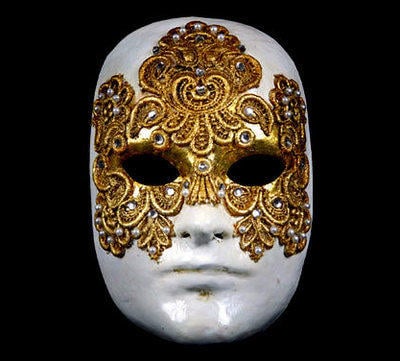
VOLTO FULL FACE
Meaning ‘ghost’ and ‘face’ respectively, this was a white mask of fine wax cloth with a protruding topology that gave it a three-dimensional, beaklike appearance when viewed from the side. It was therefore more comfortable to wear than other varieties, and its simple design usually accompanied by a three-cornered hat and cloak so as to increase the aura of mystery, made it a very common feature of the Carnival over the centuries.
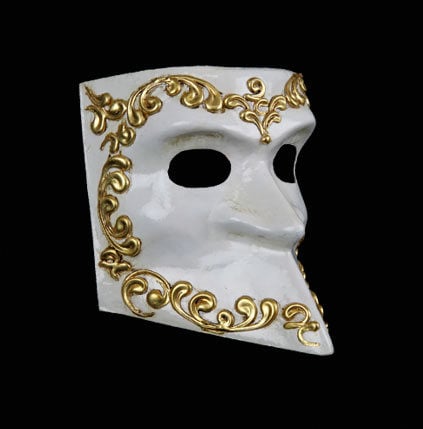
VOLTO FULL FACE
Long considered the traditional and archetypal Venetian mask, the Bauta always used to appear in white, and even though it was worn extensively throughout the Carnival period it owes much of its prominence to the fact that it was used all year round by those simply wishing to hide their identity. It was also a comparatively practical mask, since, lacking a mouth and covering only the upper half of the face it enabled masqueraders to eat and talk more freely.
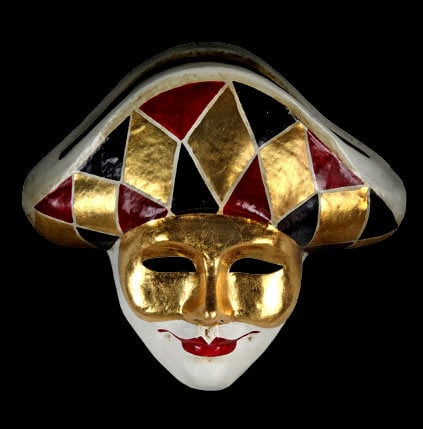
ARLECCHINO (HARLEQUIN)
Arlecchino (Harlequin) is identified by the famous Harlequin costume, with its multicoloured diamond pattern of red, green, and blue – representing clothes that are so old and patched as to have lost their original colour and material. He is a slow thinker who has a love interest in the servant girl Columbina, his lust for her only superseded by his desire for food or fear of his master.
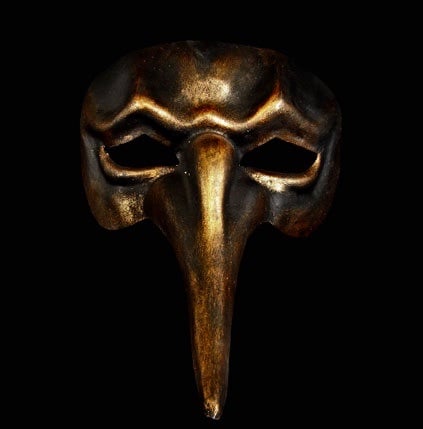
SCARAMUCCIA OR SCARAMOUCHE
Named after a character from the commedia and also known for covering only the upper half of the face, the Scaramuccia was a black velvet mask distinctive for the thin, pointed and disproportionately extended nose that served to emphasize the character’s typically vainglorious yet cowardly personality. A roguish adventurer and swordsman who replaced Il Capitano in later troupes, he usually serves a master who is not of a high social scale.
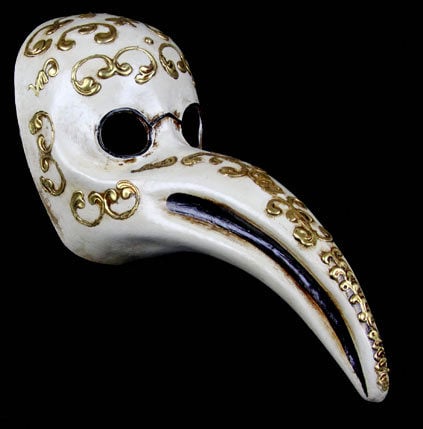
DOTTORE PESTE OR PLAGUE DOCTOR
A half-mask with a ghoulishly exaggerated nose, Dottore Peste differs from the Scaramouch in that its nose is conventionally not only wider but also curved downwards like beak, and whereas the latter mask covers the cheekbones, the Plague Doctor only covers the forehead. Its name and peculiar form originates from the 16th Century and the unusual practices of a French physician by the name of Charles de Lorme, who would wear a full face mask with a hollow beak while treating plague sufferers.The Doctor is the local aristocrat, and/or doctor of medicine or law or anything else he claims to know about, which is most things. Extremely rich, he adores food and good wines, thus he is a little round. He is typically depicted as an elderly man who only knows nonsense. He makes many cruel jokes about the opposite sex and believes that he knows everything about everything.
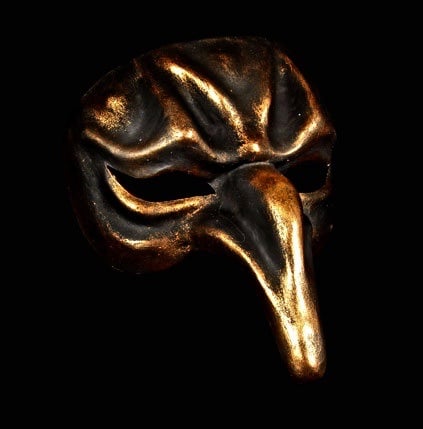
PULCINELLA
Widely believed to be the origin of Punch from Punch & Judy, the character of Pulcinella also gave birth to his own mask. It was usually black, often accompanied by loose-fitting white overalls, and featuring a more restrained variety of hooked nose that, while undoubtedly oversized, still kept a vestige of anthropomorphism
Pulcinella or Punch started out as an idiot simpleton servant, who developed into a complex , cunning character. This poor love-struck hunchback eventually became the model for the English variation – ‘Punch and Judy’. Pulcinella was witty and crafty character but also full of common sense.
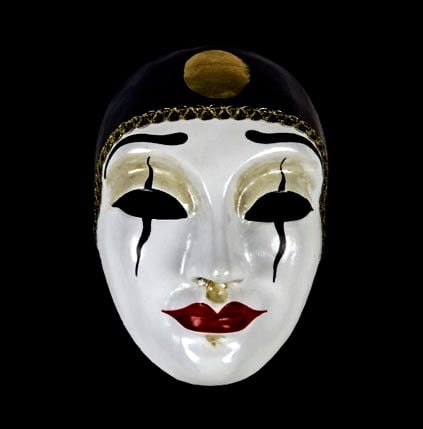
PIERROT
Pierrot is a naïve, lunatic clown, unaware of the outside world, always being cheated and joked on by the others. Despite suspicions about things, Pierrot always end up trusting people and believing in their lies. A stock character of pantomime and Commedia dell'Arte.
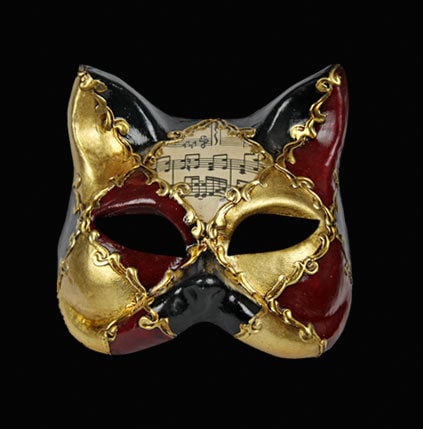
GATTO OR CAT
Meaning ‘Cat’ in Italian, the Gatto is unsurprisingly shaped like the face of a cat, with the characteristic pointy ears, narrow eyes and button nose. Perhaps more surprising is that it owes its genesis to the scarcity of cats in Venice during the days of the Republic, indicating that felines were prized above other species of domestic animal on account of their rarity.
Brief History of Masks
Genuine hand-made Venetian masks made by the mask-makers or mascherari are steeped in history & can be made in leather or with the original papier-mâché* technique.
Venice's Carnival began in the 11th Century - the original masks were rather simple in design and decoration & often had a symbolic and practical function. The wearing of masks and costumes was well established by 1436, when the mascherari were officially recognized with their own guild. The practice of wearing masks for disguise reached its peak around 18th Century, when Venetians of different social classes used Carnival as an excuse to mingle without fear of recognition or retribution. Masks along with the Carnevale virtually disappeared when Napoleon's army brought an end to the Venetian Republic in 1797. However, they have staged a spectacular comeback since a group of former Academy of Fine Arts students opened Venice's first modern mask shop in 1978.
Venice Carnival masks fall into several categories: Commedia dell'Arte masks are based on traditional characters like Harlequin and Pierrot. Fantasy masks are figments of the maskmaker's imagination, although they may be inspired by historical designs & the traditional Venetian masks such as the colombina, volto full face mask and its variant, the "plague doctor's" mask with its phallic beak. (According to tradition, the beak was intended to protect the wearer from being infected by the plague).
What Are Venetian Masquerade Masks Used For & How Are They Made?
We quite often get asked the question "How did they make Venetian masks"? So we thought we would help by answering it here...
Well, Masquerade masks have been made in Venice, Italy for over 1000 years and there are many mediums that are currently being used to create the masks.
Traditionally paper mache is used because it is light, comfortable and does not become humid on the person who wears it. Whilst some of our range is still paper mache the work intensive methodology used means paper mache can be expensive (but we feel it is still worth it). These days many artisans are using alternatives to paper mache which are far less expensive like paper mache paste with plaster (Tempur). Some modern masks are made from beautiful filigree metal (which are stunning & light and can come in gold, silver, white & of course black) and others which are not designed to wear can be ceramic.
The masks in our "designer mask" section are made from handlaid paper strips and of course are beautiful and quite rare.
I hope this helps & if you have anything else you would like to know just ask.
